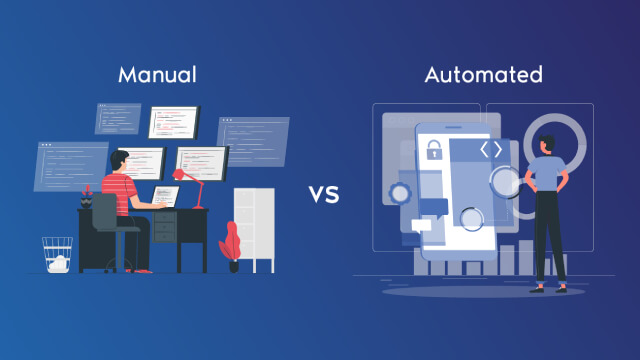Table of Contents
As you know, to optimize manual workflow effectively, businesses can use many different methods. One of the most commonly used methods today is the application of RPA. In this way, RPA will help businesses automatically perform repetitive tasks of fixed logic.
However, not all manual processes can be automated by software robots. The following WinActor Support article will help you better understand how to define a manual process that can be automated.
What Is Robotic Process Automation Capable Of?
Robotic Process Automation is a system of RPA specializing in repetitive, fixed logic tasks. These bots work entirely on computers. It can operate independently without human intervention.
For automation robots to work, you will need to set up a process for them. Because RPA does not have the self-learning ability like AI, it will only remember programs that humans create. After the staff conducts the programming, the software robot will memorize each step and repeat the next time.
The range of tasks that robotic process automation can operate today is very diverse. It can work in many different fields: healthcare, insurance, banking, credit mortgage. In addition, now businesses can deploy RPA in most departments in the ministry, for example personnel machine with fixed repetitive work blocks, automation robots can work well.
Besides, reporting is one of the most critical tasks for all businesses. The staff will often have to make financial statements, inventory statistics, and customer reports every day. To relieve pressure and improve accuracy for reporting work, RPA will help the business to accomplish that task. The software robot can set up reports in real-time. From there, companies can rely on that to consider and develop new strategies in the future.
The Future Of RPA
Considering the age of robotic process automation, RPA is likely to work effectively for a long time. Besides, one of the advantages of a software robot that significantly improves its operating life is flexibility.
Yes, the robotic automation system is not a fixed piece of software. Therefore, as the workload and tasks change, the business can modify the RPA bots. This process is entirely free; companies will not have to pay any other costs.
Up to now, Robotic Process Automation has been the most powerful enterprise software globally. It provides many benefits to the business, which contributes to efficient workflow optimization.
At the same time, small and medium enterprises can take advantage of software robots. The investment cost and flexible legacy of RPA will help these businesses have a complete and productive workflow.
Robotic process automation will undoubtedly do more than in the present times in the future. Because businesses providing solutions always value innovation. They always try to create more advanced features that effectively solve business problems.
In addition, another reason why RPA has strong growth potential in the future is the flexibility in the organizational structure of bots. It can be flexibly based on each business’s needs and work requirements at different times.

Misunderstandings About Software Robots
Currently, there are many misconceptions about the nature and function of RPA. Here are 4 mistakes that many users often make when it comes to RPA:
- Robotic Process Automation is a flexible system
- RPA is an artificial intelligence product
- A software robot is a physical robot
- Automated robots can work efficiently even with unclear processes
In addition, there are many other myths when it comes to RPA’s users. Misunderstanding of automation robots will cause businesses to receive many negative consequences.: money, work performance.
Therefore, the best way for companies to effectively implement RPA is to find out and study the working process. Here is the best manual processes automation every business needs to know:
<>How To Automate Manual Processes
1>1. Choosing and Developing the Right Process
Selecting and developing the correct process is one of the tasks that play an essential role in the success of Robotic Process Automation. Not all business processes are suitable for automation.
Some of the issues that need to be considered during industrialization are: Time, resources, and situations where failure can occur. At the same time, tasks with fixed rules and steps are also suitable for automation.
After the process selection, the enterprise will conduct process development. Preparing a UML diagram and performing software analysis will make the development process faster and more efficient. In addition, during process development, enterprises need to control errors and fix them simultaneously to ensure continuity for this phase.
2>2. Application Of The Process In Departments
After the manual process is automated by computer software, the software is installed in the automation process department. At this stage, the business will need to instruct and explain how the process automation robot works.
At the same time, they also need to measure the performance of RPA bots. Errors in the working process will need to be sent back to the RPA development team to fix the problem in time, ensuring stable performance for the workflow. In the future, updates will be on the software, and the process will be continuously optimized.
<>Conclusion
Hopefully, the article will give you an overview of how to automate manual processes with robotic process automation. It can be that implementing RPA for enterprises today is the best choice for them. Because RPA can work effectively, contributing to improving productivity and quality of work.
However, to deploy software robots for manual processes, businesses must be aware of compatibility. Specifically, companies will need to select and develop the right manual process.
After that, proceed to deploy RPA and regularly check for errors in the process. Remember to help the technical staff so that they can fix RPA errors as quickly and efficiently as possible.

WinActor is an RPA software solution by NTT DATA Corporation to help businesses master technology, create breakthroughs in the digital age 4.0.




